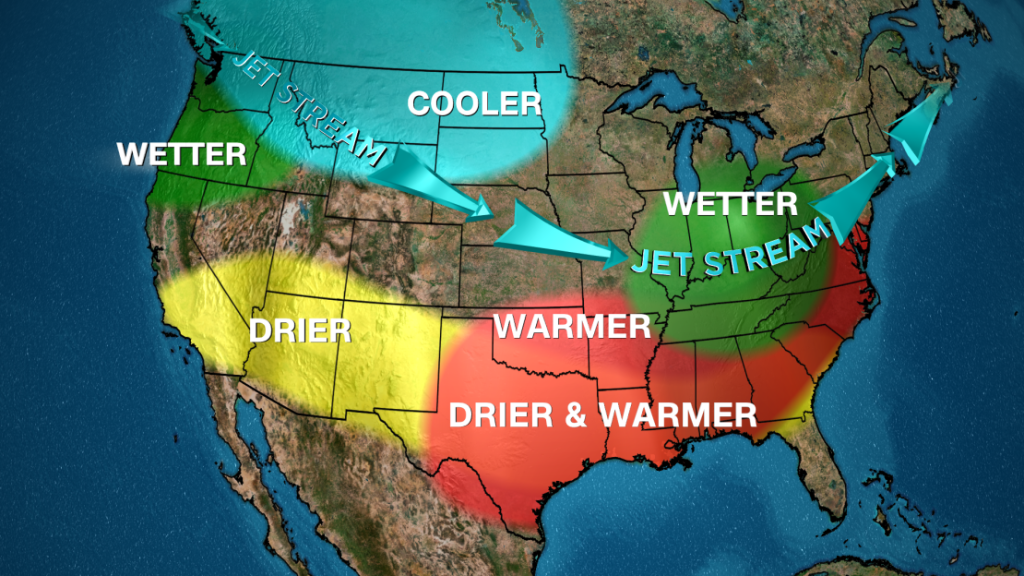Ahead of winter, a weak La Niña is expected to develop that could influence temperatures, precipitation, and snow across the United States. The effects of La Niña are most pronounced during the winter months in the Northern Hemisphere. Last winter was the warmest on record due to El Niño, which prevented heavy snow events in parts of the US. La Niña has a 60% chance of emerging through November and is expected to persist throughout the winter and possibly into the early spring of next year. While La Niña or El Niño are not the only factors influencing weather, they typically have a significant impact on winter weather in the US.
The strength of La Niña matters, with a weaker event making it more likely that other weather and climate phenomena could play a role in influencing the weather. Many La Niña winters have temperature and precipitation trends in common, often due to the behavior of the jet stream. The jet stream shifts north during a La Niña winter, which typically moves stormy weather out of the South and into parts of the northern US. The latest winter forecast shows that the northern tier of the US is expected to be wetter than normal this winter, especially in the Pacific Northwest, Midwest, and parts of the interior Northeast.
The winter forecast also indicates that the southern half of the US and much of the East are expected to be warmer than normal. This could result in some winter storms in the East being wetter rather than snowier. Drier and warmer conditions are expected across the South, potentially worsening drought conditions throughout the season. Parts of the Midwest, Plains, and Rockies could see temperatures closer to normal while the Pacific Northwest and parts of the Dakotas could experience cooler than normal conditions. The combination of wetter and cooler conditions in the Pacific Northwest may lead to more snow, which is crucial for tourism and water supply.
Southern California is expected to be drier and warmer than average, typical of La Niña conditions. It is important for the region to receive soaking rain in the coming months to shut down wildfire season and prevent fires from burning through the abundance of fire fuels available. The forecast for Northern California indicates near-normal conditions, despite La Niña’s impact on wet winters in the past. The Midwest is expected to be wetter than normal, which is crucial for combatting ongoing dryness and drought in the region. Overall, the winter forecast suggests a shift in weather patterns compared to the previous year, with potential implications for various regions in the United States.


